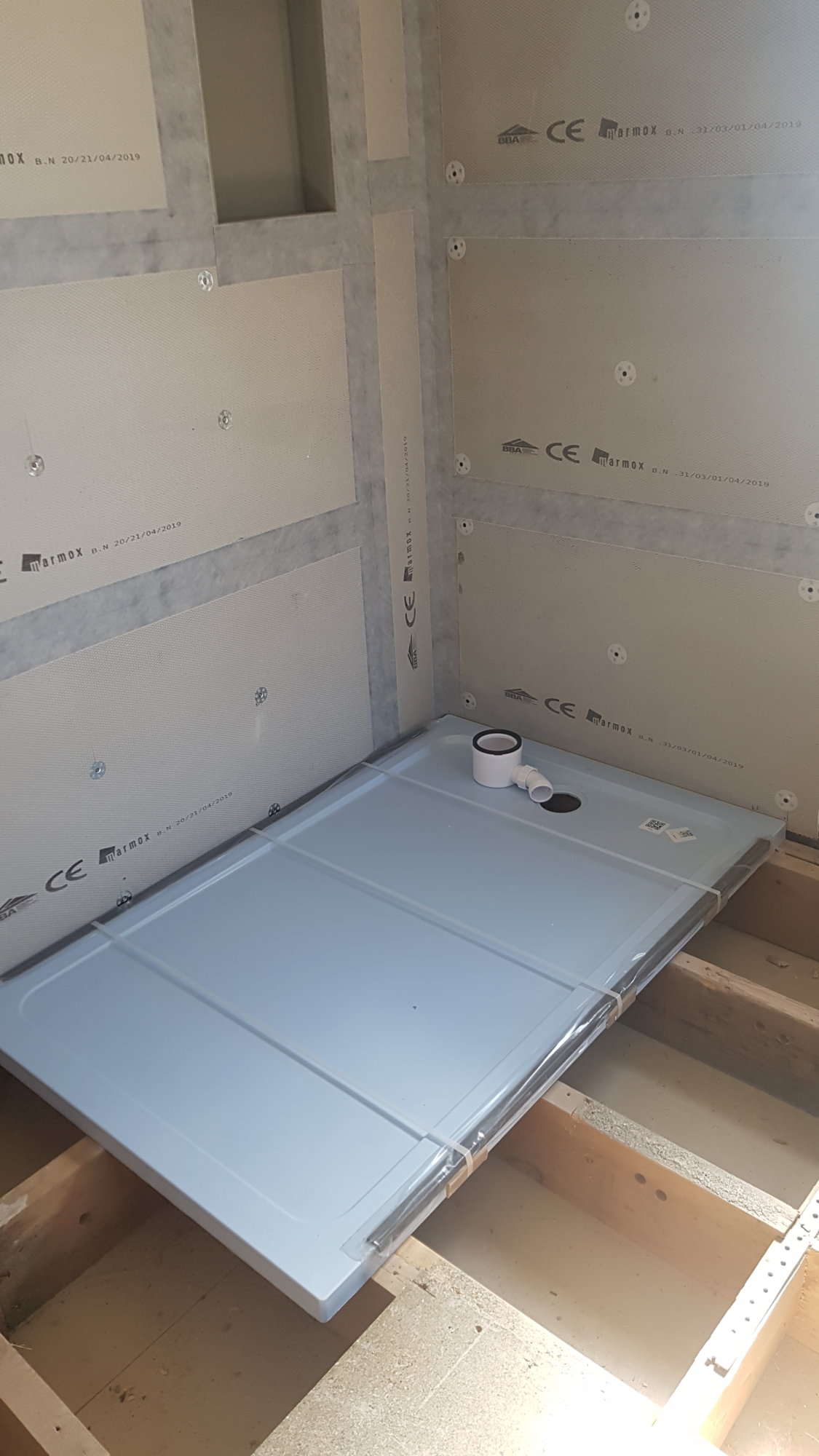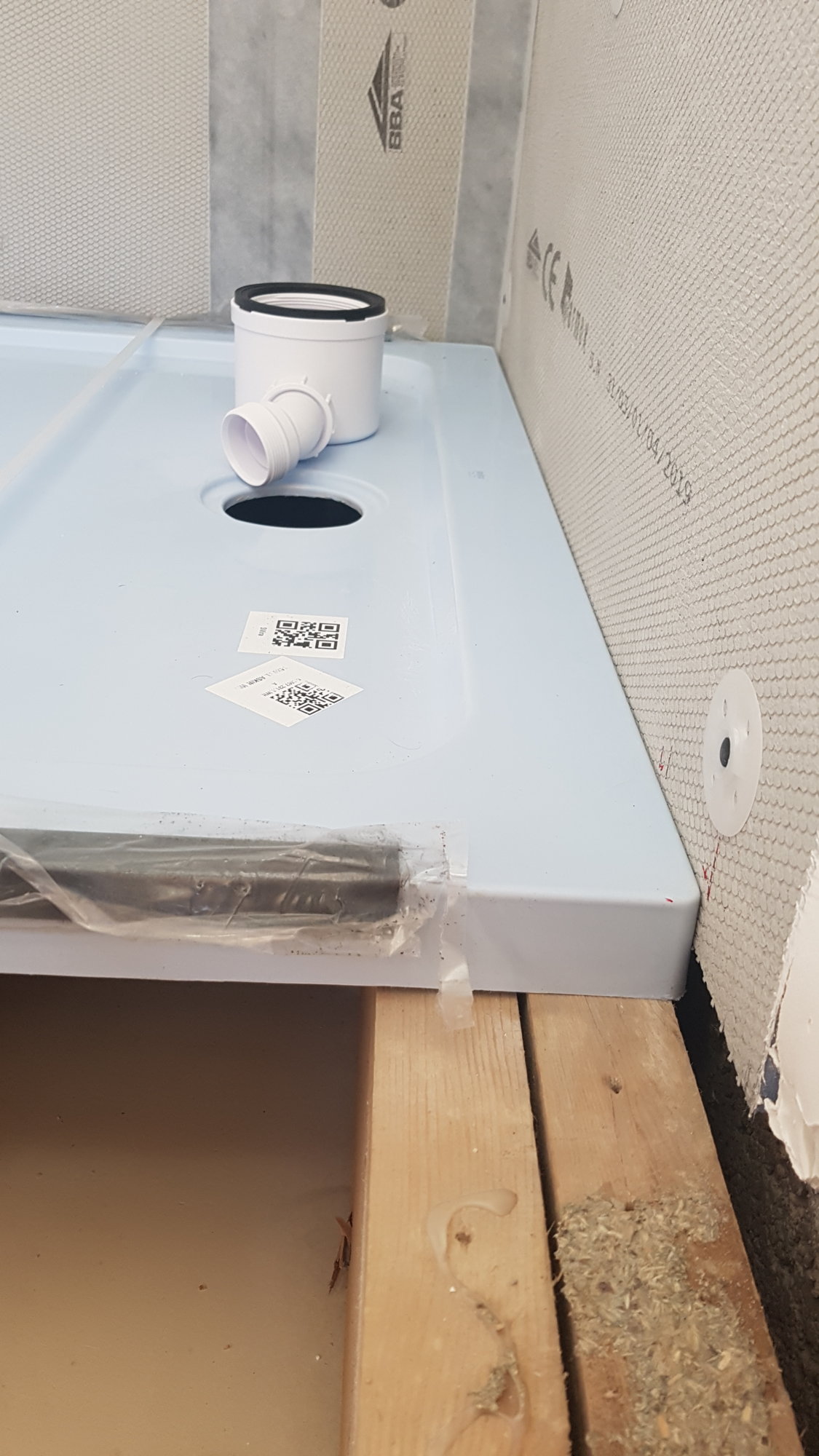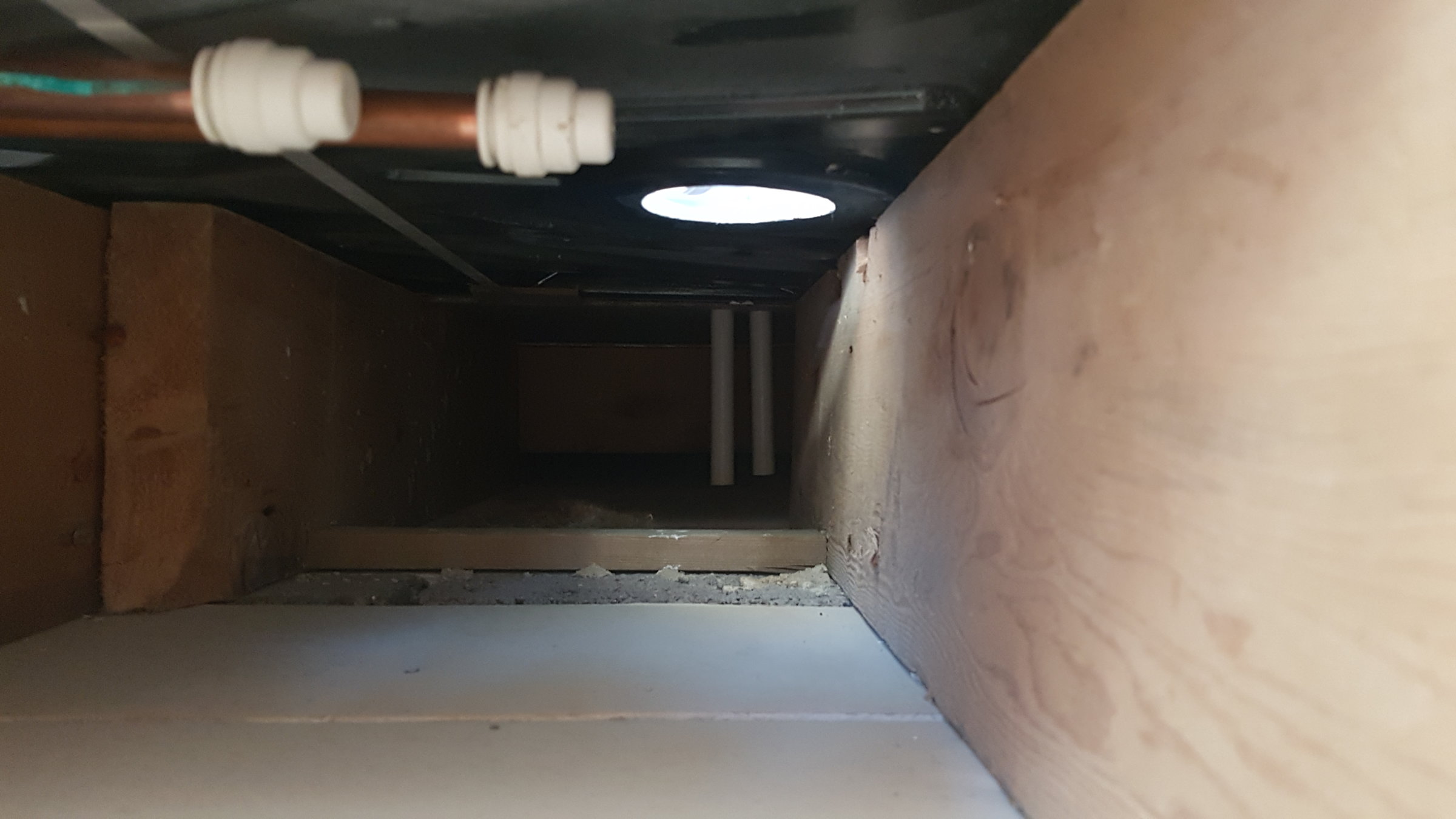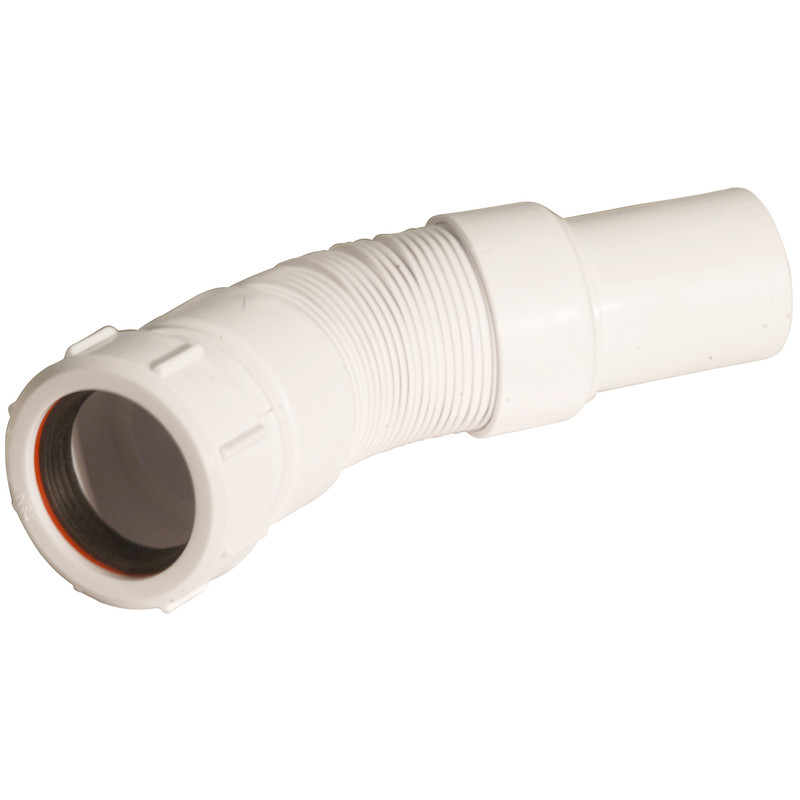As I'm sure you experts will agree, joists always seem to be in the wrong place and while mine could be worse, it could also be better.
I have placed the shower tray in position to get a view on how the McAlpine fast flow waste will fit and the good news is that it will fit, however, it is too close to the joist to run the 40mm waste pipe straight through the joists and external wall as I had intended.
Here are some photos to show the issue:
The last photo is the view from the side of the tray showing how close the trap is to the joist. This joist is the one that the waste pipe needs to run through and then through the external wall.
I suspect I will need to position the trap, so the connection is pointing away from the joist (like I have positioned it on top of the tray) and then use bends to run round to the joist. Using "sharp" bends so close to the trap concerns me as I want to ensure the flow is not restricted too much due to the shower tray being low profile. I did wonder about using a flexible piece of pipe, which would allow a more gradual bend around to the joist, but I'm not sure if this is a good idea.
I would appreciate any guidance on the best way to connect this trap to the waste pipe that needs to go through the joist. I confess, this is my first attempt at doing something like this.
I have placed the shower tray in position to get a view on how the McAlpine fast flow waste will fit and the good news is that it will fit, however, it is too close to the joist to run the 40mm waste pipe straight through the joists and external wall as I had intended.
Here are some photos to show the issue:
The last photo is the view from the side of the tray showing how close the trap is to the joist. This joist is the one that the waste pipe needs to run through and then through the external wall.
I suspect I will need to position the trap, so the connection is pointing away from the joist (like I have positioned it on top of the tray) and then use bends to run round to the joist. Using "sharp" bends so close to the trap concerns me as I want to ensure the flow is not restricted too much due to the shower tray being low profile. I did wonder about using a flexible piece of pipe, which would allow a more gradual bend around to the joist, but I'm not sure if this is a good idea.
I would appreciate any guidance on the best way to connect this trap to the waste pipe that needs to go through the joist. I confess, this is my first attempt at doing something like this.






